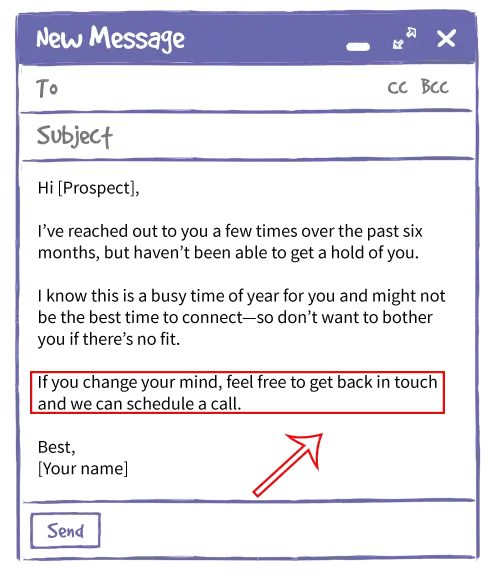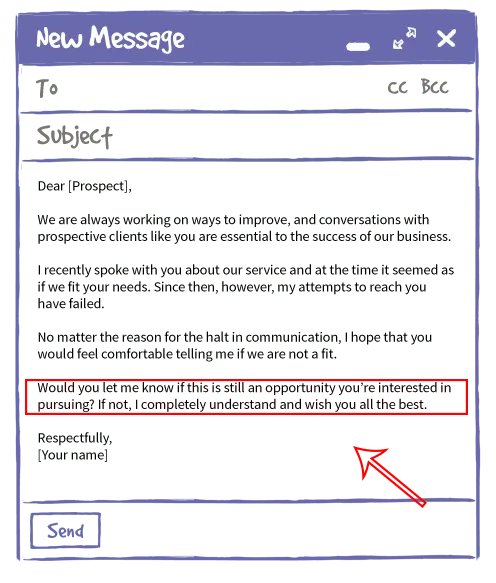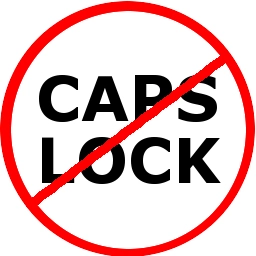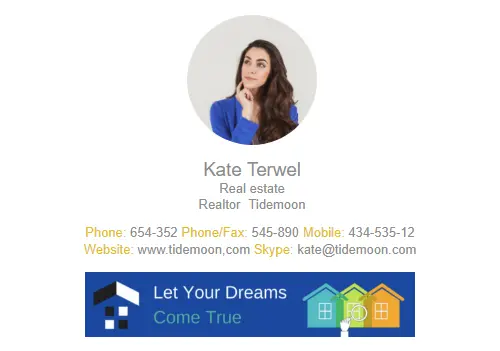How To Master Email Sales Closing Lines To Seal Your Sales Immediately
1. Why closing email phrases are important for your sales
2. Professional tips on writing best sales closing lines
3. Formal email closing lines
4. Informal email closing lines
5. Types of email closing statements
Useful tools:
1. Newoldstamp - Email signature marketing
2. Mailchimp - Email builder and sender
3. Reply.io - Personal email outreach, calls, and tasks
4. RocketLink - Your branded short linker
5. Canva - Online tool for making designs
Although our memory generally tends to serve us well, sometimes it can also land us in trouble. For example, by making us recall only the last items of a shopping list or the last sentences of our notes during exams. However, in marketing, we can actually use this phenomenon (known as the recency effect) to our advantage. Even though the recency effect will, to a certain extent, amplify the impact of an email sales closing line, it goes without saying that we need to conclude our sales emails in ways that will help us win over new customers. So the question is how to close a sales email in the right way?
Why closing email phrases are important for your sales
Sales reps tend to overlook the importance of closing email phrases because we put the most emphasis on subject lines and opening lines. However, believe us when we say that the closing email lines are equally, if not more important, in increasing your conversion rates. Because they lie at the end of your email, email closing statements are your last chance to win over prospective customers and convert them. The best sales closing lines leave prospects thinking about what the next step is and invite them to take a certain action. They make your entire message memorable and leave an overall good impression. Furthermore, due to the recency effect, utilizing email ending phrases is the best way you can convert customers and get them to act on your offer.

Professional tips on writing best sales closing lines
-
Be short
Make sure to keep the sales email closing short and simple. If the customer has read until the end, then a long email closing would just bore them and discourage them from engaging in your business. Along with being short, having a closing that encourages the customer to know more about your company, such as a question, thought-provoking statement, clear call-to-actions will be able to drive sales of your product or service forward. Again, the closing line is the final chance you’ll get to win the customers. Don’t make them read an essay. A short sentence of about 10-15 words will be just fine

image courtesy of criteriaforsuccess
-
Be clear
If the customer is confused on what your product is, then, with the sales email closing lines, you get one last chance to clear up that confusion. You can do this by stating a brief rundown of your product, linking to a site with more detail, or even giving more options for the customer to contact you and learn more about the product. Having a clear statement about what you’re offering oftentimes helps boost sales and it also makes your product more relatable than when you offer a vague description.
-
Be polite
When you’re introducing the product in sales email to your customer, you’ll want to make a good first impression so that they feel comfortable enough to approach you and invest in you. Now, being rude and hostile towards your customer is no way to do that. You’ll need to write your email closing in a polite yet professional manner. Being too friendly is also a drawback as you can come across as too clingy, deterring customers from buying your products. Don’t end your email closing as if you’re best buddies with them, and don’t appear rude. And, maintain a positive impression by being humble and polite.

image courtesy of criteriaforsuccess
-
Don’t use Caps
In writing, you can’t easily figure out the tone of voice the person is using, so people have considered using all caps akin to shouting. Using all caps in email closing and in your sales email can generally be characterized as aggressive and audacious. People don’t want to be associated with others who shout or demean them. So, to improve your sales, a hard and fast rule is to avoid seeming hostile to your clients.
-
Use your full name
It is common courtesy to tell your name to other people when you do business with them. Similarly, email closings, including your full name will give the email a polite tone. Not just that, but using your full name also gives the email a bit of personality and makes you someone the customer can relate to. The customer may know plenty of Adams, but if you use your full name, you’ll be known as Adam Baldwin. This helps your customer remember your product better.
-
Don’t forget about CTA
You’ve spent hours crafting the perfect sales email pitch and you’ve sent it to the perfect target demographic, but you missed one thing, a Call-to-Action button. While forgetting to include a CTA may seem like a minor inconvenience for your customers, not having a CTA can confuse your clients on what steps they should take. Studies have shown that having an appealing CTA can even boost conversions. CTA can be added to a simple task as registering for an account, social media sharing, to even the option for “online chatting” and you can have multiple CTAs in your email. So, use them to the fullest.
-
Check grammar
Making grammatical errors in your sales emails will seem unprofessional and make you appear as if you don’t know what you’re doing or that you’re not serious about your work. This can leave a negative impression on your customers which can dissuade them from investing in your company. There are plenty of free websites that can check for typos as well as grammatical errors. If you do want your emails to look professional, you can hire an editor to go through your email draft as well.
-
Use email signature
Create an email signature to look more professional and promote your product or service. It also saves time when you have an email signature template ready to go. You can download these templates or pay a designer to make a unique one for you. You can even see the statistics and determine how well an email template is doing for conversions on some sites. And, because it gives off a professional vibe and makes your company name more memorable, it will bring in more sales and even improve conversions.

Click here to create an email signature right now and close your email like a pro
Formal email closing lines
Generally, for professional email communication, you should use formal sales email closing lines. Typically, you should use formal closing statements when dealing with new clients or recently converted clients. Formal tones convey a sense of professionalism and help maintain your company’s image. The closing statement also depends on your email copy. If you’ve maintained an overall formal tone and written a short and straight to the point email template, it would be best to just use formal closing phrases.
Informal email closing lines
Depending on the type of customer and the product/service you’re marketing, sometimes you may be better off using an informal closing statement rather than a formal one to send the best sales emails. Having fun and quirky way to end your sales pitch to your customers will make you more memorable in comparison to your contemporaries so they will be more likely to remember you and they could also convert on your offer. You can use informal ways to close an email when you’re dealing with an old client so they have even more reason to stick by your company. Alternatively, you could take a risk and send an email with funny and eccentric closing statements to prospective clients, in hopes to woo them. But, this will only work well, if your overall email is in a conversational tone.
Types of email closing statements
Email closing statements can be of several different types. We’ve given a rundown of the different types of how to end a sales email.
Question
When you end your email with a question, the recipient feels compelled to respond and through this, you can strike up a conversation with your prospective customers. A question is the best way to turn a simple email into a full-blown dialogue.
1. How many of our strategies worked for you? Let me know and I can send some more.
2. What do you think about employees undergoing leadership training?
3. Would you like to watch a short video on how to boost your conversion rates?
Statements
You can utilize your closing lines as a way to educate your prospective clients. You could provide statistics, social proof or even the latest updates on your products and services and use that to influence them.
1. By the way, the mobile app that we created was showcased at TED recently.
2. We were advising a startup on their growth strategy and last year they raised $10 million.
3. Our [mention a certain program] won two national awards and we’re now even taking on mentees.
CTA
Adding a CTA is the best way to get your prospects to take action and involve them in your sales process. It tells them what’s next and drives them to go for what is recommended. Make sure that CTAs are direct, to the point, and tells them what their next step should be.
1. Just wanted to confirm that the next point in the agenda is for you to [task]. When do you want us to schedule that?
2. Sign me up now. I want a 20% discount.
Request
With the request approach, your job is to find a common ground and use that to connect with the prospect. So, you can ask them for their opinion or feedback on your product or service. This way, you’re striking up a conversation and also strengthening your relationship with them.
1. I just saw your published article on The Washington Post. Congratulations! It was such a great read. I’m also trying to get published. How was the process for you?
2. I’m running an online campaign on [the given common topic]. I was wondering if you could take a look and give me your feedback?
Thought-provoking
Thought provoking questions or statements immediately capture your customers’ attention and force them to just take a break and think about what you’ve just posed. Because they stay on your clients’ minds all day long, using them as your email sale closing line would be quite effective.
1. Did you know [surprising fact about the product in discussion]?
2. Have you noticed the better retention rate with your new employee benefits program? We were thinking about opting for something similar.
Assumption
This marketing tactic functions under the assumption that the client has already decided to act on your offer. It can be tricky to write assumptive closing lines without appearing overbearing but with these examples, you won’t even have to worry about that.
1. Do you have any more questions or concerns? If not, I think we’re ready to get started.
2. So, when can we sign the contract?
3. Using our latest software, we did a thorough analysis of your site to check for customer attention retention. Should I send over my results?



